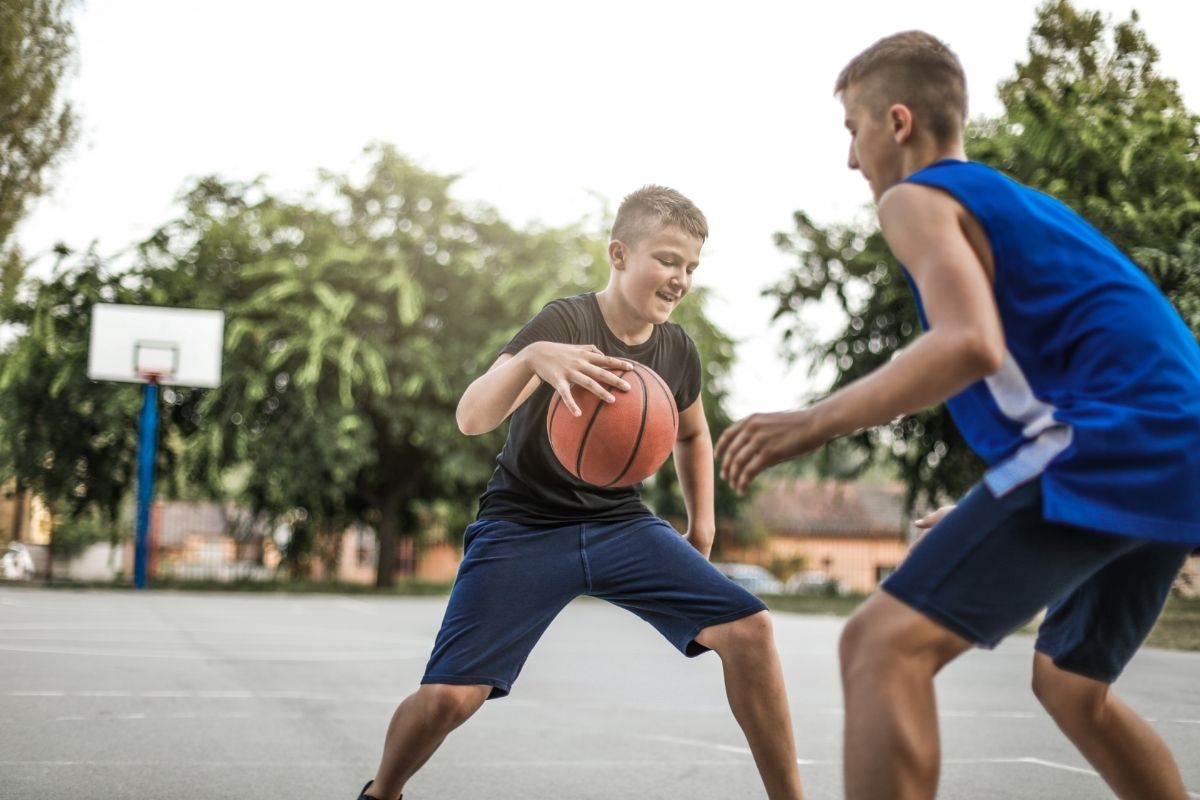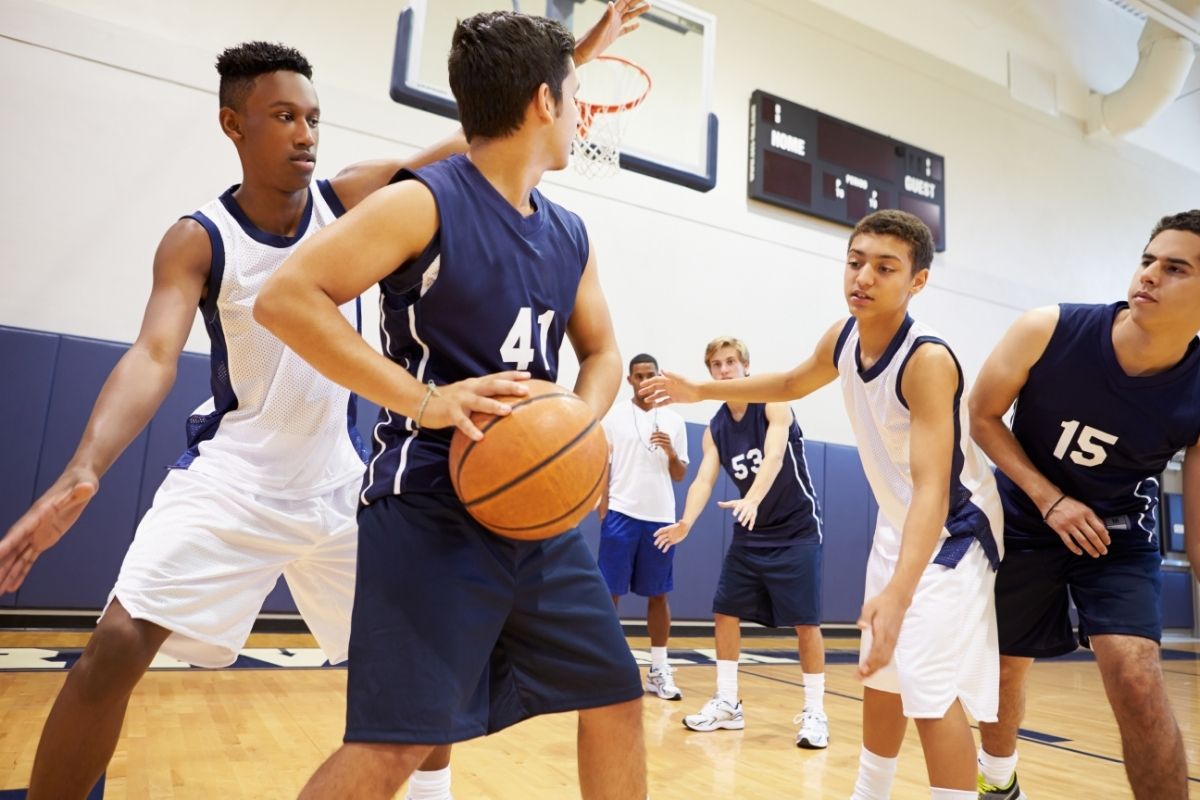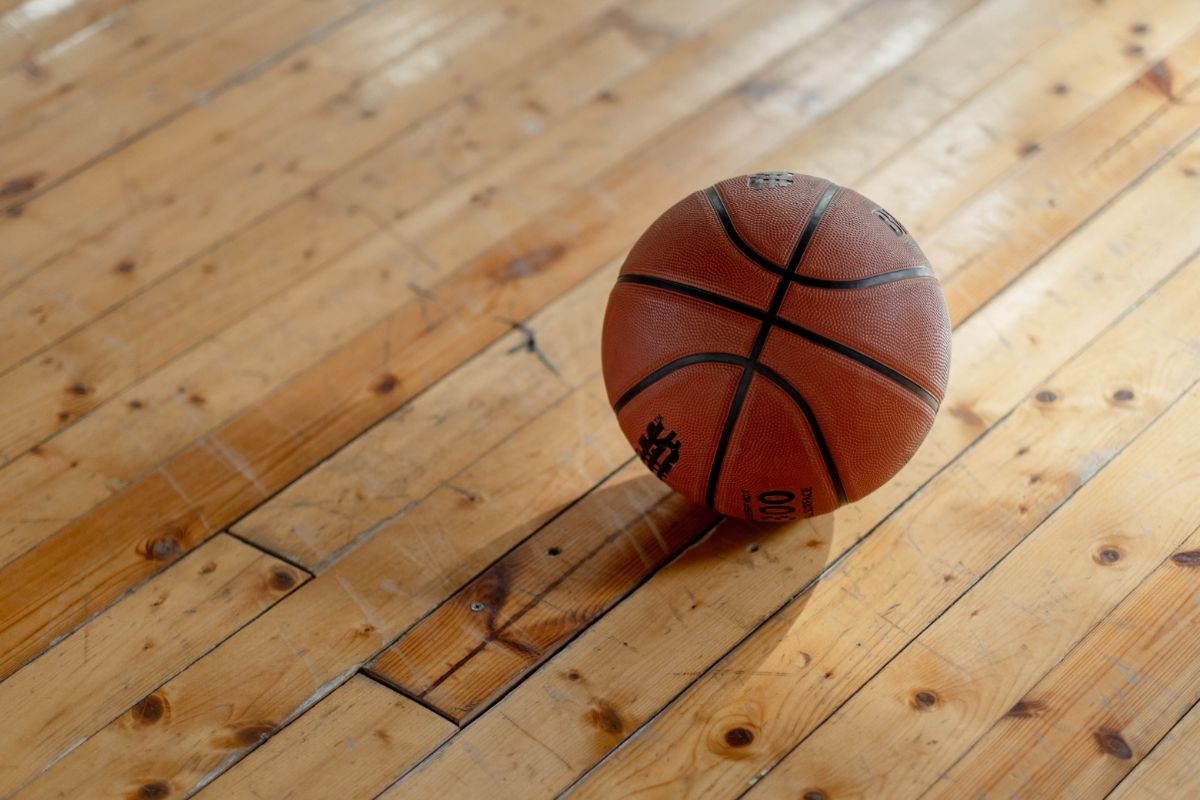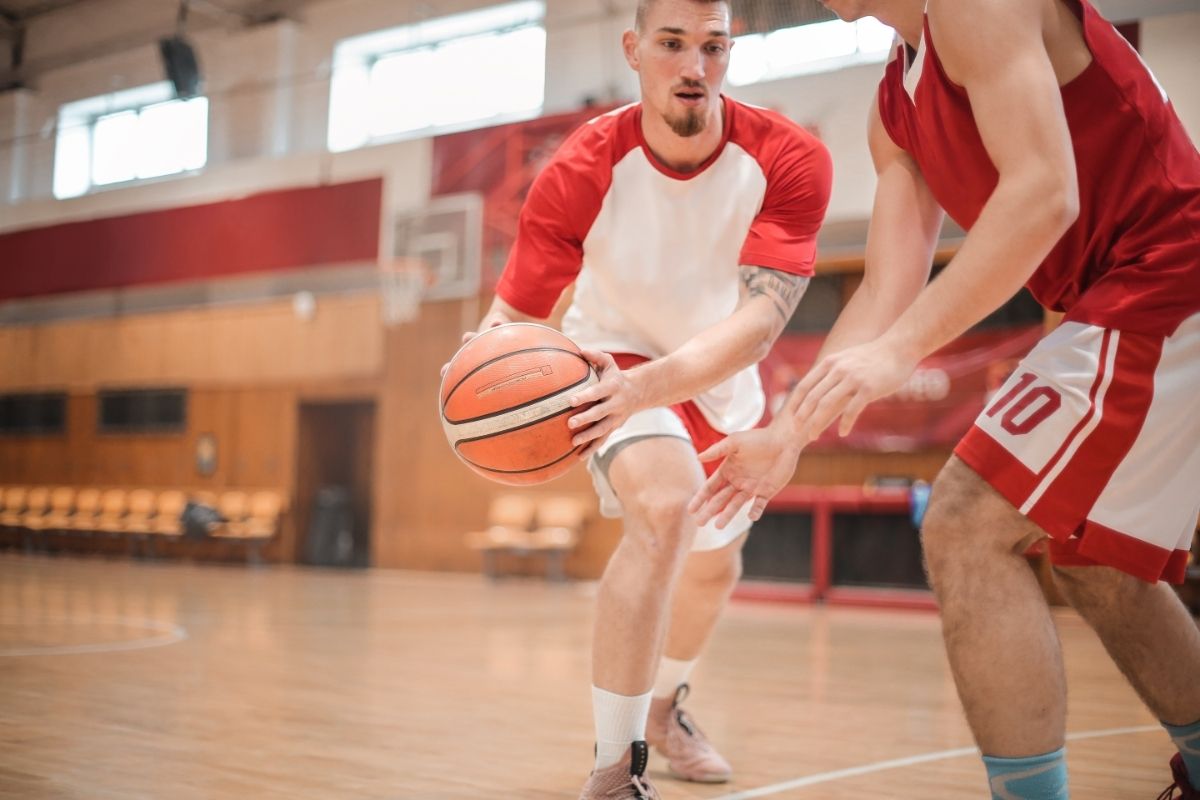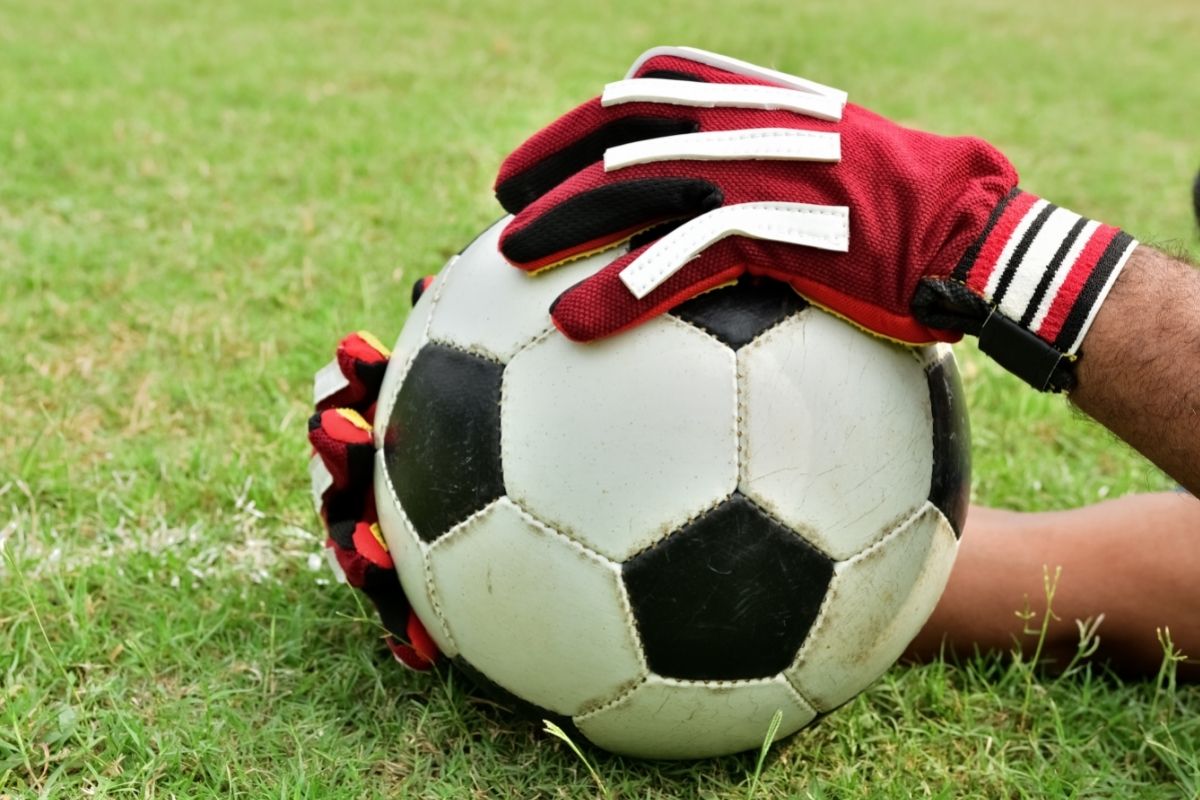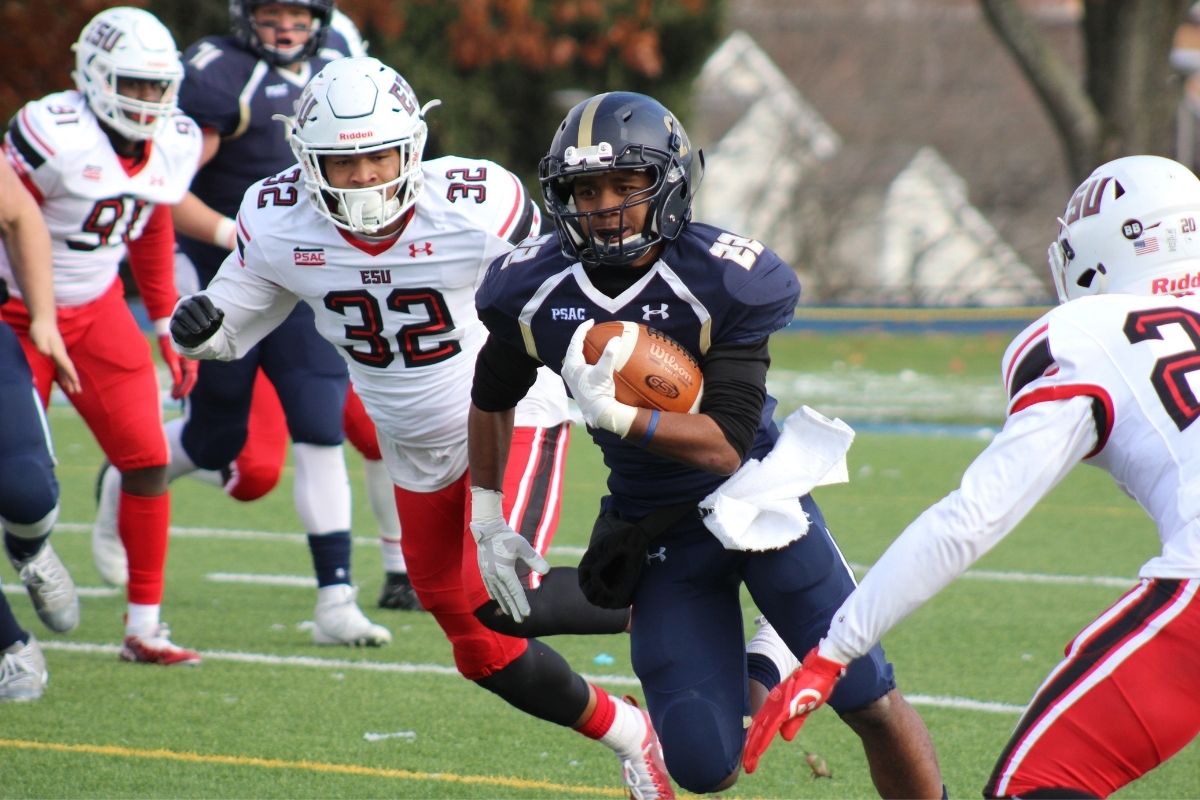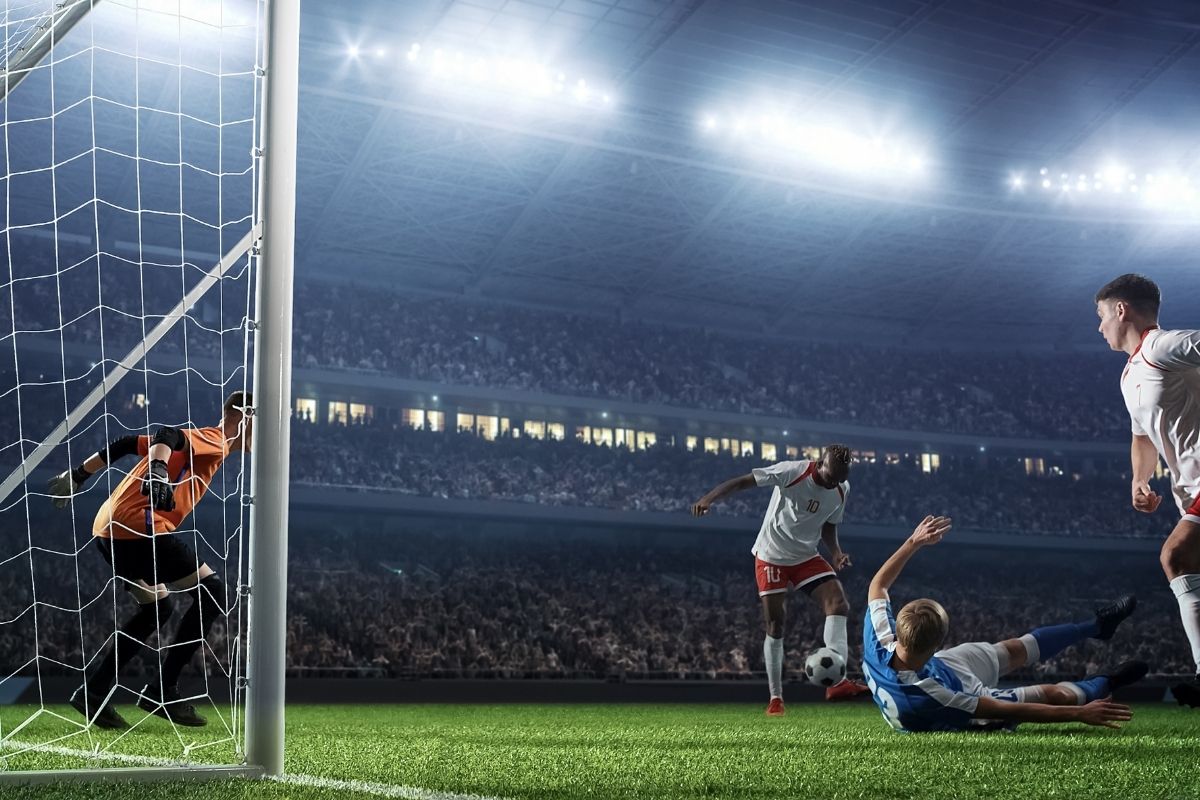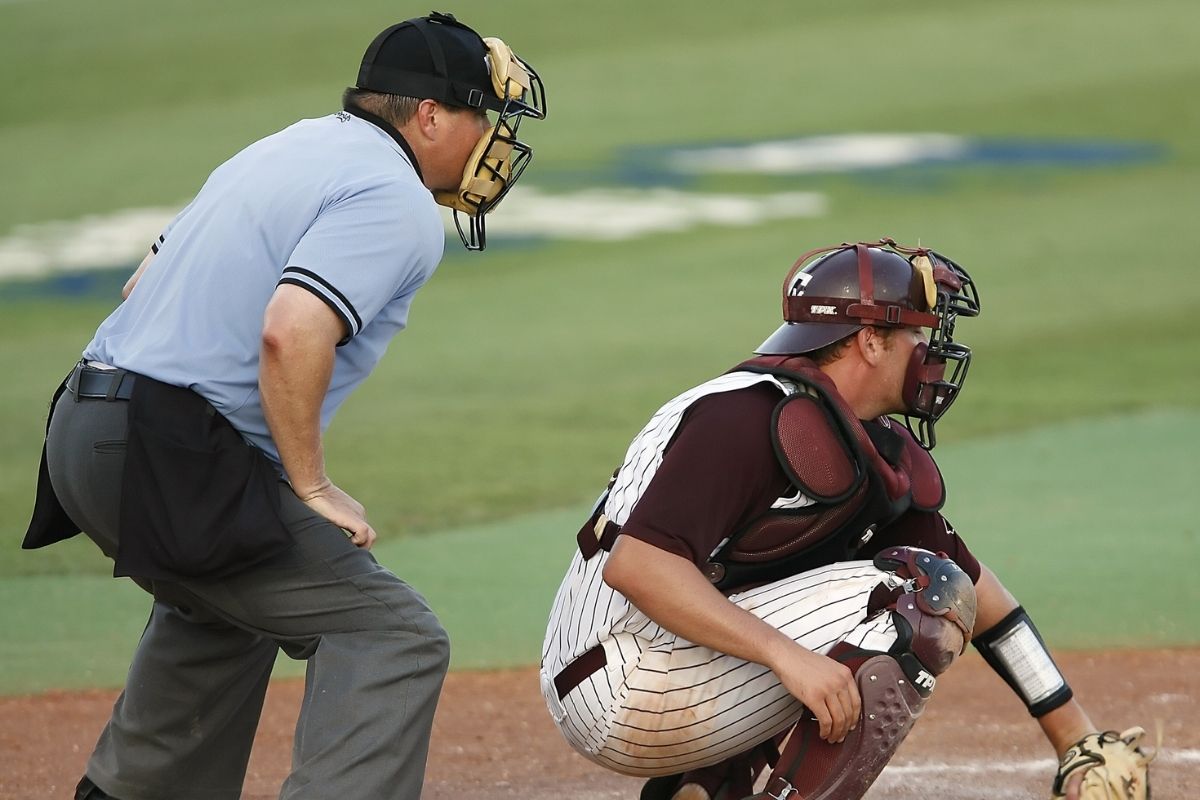Double dribble is a term that you’ve probably heard thrown around a lot in the basketball world, but what does it mean? And how does a player double dribble?


In this article we’ll be breaking down what a double dribble is, and how players avoid doing this in games.
We’ll also be taking a look at carrying, which is often interchanged with double dribbling. So without further ado, let’s get started.
What Is A Double Dribble?
Double dribbling is a violation given to a player that generally does one of two things, these are:
- Using two hands to dribble, or
- Stops whilst dribbling the ball, and then starts dribbling again.
It’s probably one of the most elementary rules when playing basketball, and because of this it’s much more popular the more amateur games get, rather than professional or college matches.
The official NBA rules declare that a dribble ends when a player:
- Touches the ball simultaneously with both hands.
- Permits the ball to come to rest while the player is in control of it.
- Touches the ball more than once while dribbling, before it touches the floor.
The International Basketball Federation (FIBA) has this to say on dribbles:
A player shall not dribble for a second time after his first dribble has ended unless between the 2 dribbles he has lost control of a live ball on the playing court because of:
- A shot for a field goal.
- A touch of the ball by an opponent.
- A pass or fumble that has touched or been touched by another player.
There is an exception to the two hand rule which is called the power dribble.
This dribble happens when a player going for a shot uses both hands to powerfully dribble the ball to set up a move, or to make a defender back away from them.
A dribble ends whenever the ball has been grabbed using two hands, or when one hand of a player dribbling the ball has cradled the ball in their hand.
If the player dribbles the ball past this point, then their action is considered illegal and they’ll be punished.
A player can restart their dribble after picking up their dribble if it’s been knocked from their hands, or they can reset their dribble if the ball hits the rim of the board when they take their shot.
If an attempted shot fails to hit the rim and the player grabs the rebounded ball and begins dribbling once again, then they should be called out for double dribbling.
Because of the technicalities of dribbling a basketball, there’s plenty of strategies used in order to either throw an attacker off, by making them perform a double dribble, or getting a defender off their dribble, in order for them to continue dribbling.
These are all perfectly legal tactics, but they usually work better in less experienced games.
There is no double dribble violation during the jump ball, a throw-in or a free throw until you start dribbling the ball normally again.
Punishment


So now that we know what a double dribble is, what punishments are given to players that double dribble in a match?
Under the National Collegiate Athletic Association, (NCAA) National Federation of State High School Associations (NFHS) and FIBA rules, if an illegal dribble violation takes place during a match, then the ball is awarded to the opposing team out of bounds, nearest to the point where the violation took place.
NBA rules declare that the ball is awarded to the opposing team at the nearest spot, but no closer to the end line than the free throw line extended.
Carrying
Carrying is a very similar violation to double dribbling because the player stops dribbling and then starts again soon afterwards, carrying is different to double dribbling though because in order for carrying to take place, a player’s hand must be holding the ball whilst moving, or the ball must be rested whilst you move with it.
This is a much more common violation seen in higher tiers of play than double dribbling because of the way that most players dribble the ball whilst moving.
Most players will move their hand from the left to the right of the ball whilst dribbling, this is done to better control the ball when moving, and allows you to quickly change direction if necessary.
So long as the ball doesn’t come to rest at any point of time this is completely legal, and allows for much better control and handling of the ball.
Problems can happen though when players slide their hands under the ball too far, resulting in you carrying the ball for a significant distance.
This can be done accidentally using this method of dribbling, and will always result in a carrying violation.
A carrying violation can always be called when the player’s hand is below the ball’s plaine of 90° and the required up and down motion of the ball completely stops.
These two things are rarely seen with double dribbling, and this is what sets carrying and double dribbling apart.
Conclusion
Double dribbling is going to be a phrase that you’ll always hear when watching basketball, regardless of if you play at the highest level like NBA or college, or play casually on a weekday, you’ll always be wary of double dribbling, as it’s one of the core rules to follow when playing basketball.
Hopefully this article has shown you what double dribbling is, and how you can avoid doing it whilst playing basketball.
- Can You Play Pickleball on Grass? Tips and Tricks - June 12, 2023
- Do Pickleballs Wear Out? Everything You Need to Know - June 12, 2023
- Can You Play Pickleball on Concrete? A Guide to Playing on Hard Surfaces - June 12, 2023

